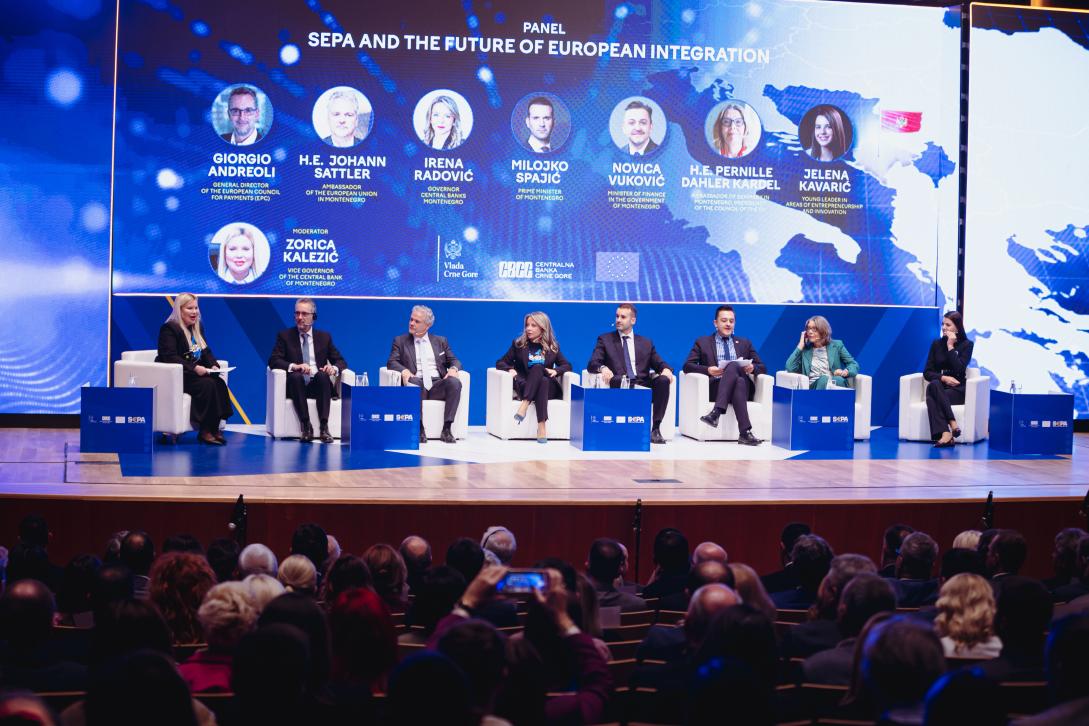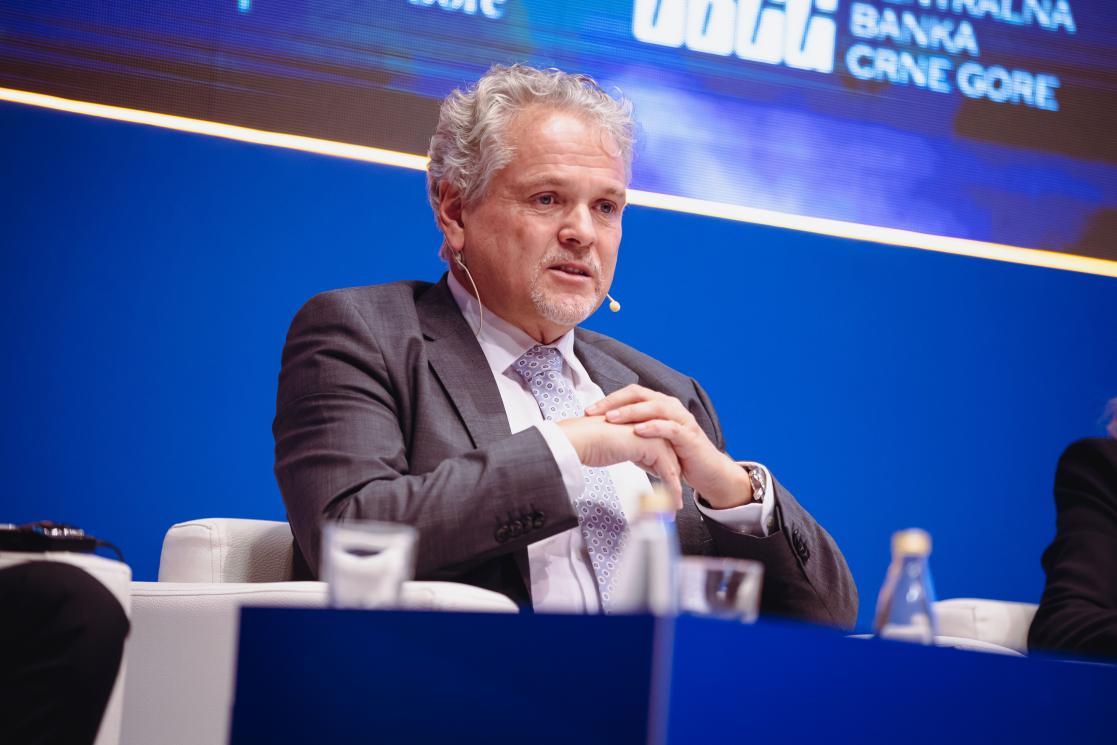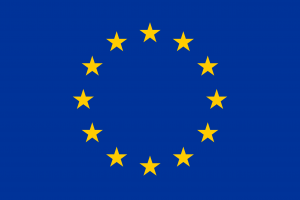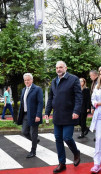The First SEPA Transactions FROM Montenegro Launched

- „SEPA is a step strengthening the economic and political cohesion of the Western Balkans and serves as a bridge bringing this region closer to the European Union’s Single Market“, added the EU Ambassador to Montenegro, Johann Sattler
- „SEPA is not a technical change but a step that makes the European Single Market part of the everyday life of our citizens and businesses“, said the Governor of the Central Bank of Montenegro (CBCG), Irena Radović
- „This is a key step forward for future generations – a safer, stronger, more European future for Montenegro“, said Prime Minister Milojko Spajić
The CBCG, the Government of Montenegro, and the Delegation of the European Union in Montenegro marked a historic milestone – the launch of the first SEPA transactions from Montenegro. With this step, the country has effectively become part of the common European payments area. This marks a new chapter in Montenegro’s European integration process and the modernisation of its national payments system.
Held under the slogan “European Finance for New Generations: SEPA as an Integration Instrument,” the ceremony symbolically signified Montenegro’s operational entry into the European Union’s payment infrastructure less than a year after the country became the first in the Western Balkans to join the Single Euro Payments Area (SEPA).
The event was opened by CBCG Governor Irena Radović and the President of the European Central Bank (ECB), Christine Lagarde, who addressed participants via video message.
In her opening remarks, Governor Radović stated that by initiating its first SEPA transactions, Montenegro now participates equally in the European payment system alongside EU member states. She highlighted that citizens and businesses can now send and receive euro payments to and from 40 European countries — quickly, securely, and at minimal cost, under the same rules and conditions that apply within the EU.
“It is not a technical change but a step making the European Single Market part of the daily lives of our citizens and businesses. It is tangible proof that the enlargement process is not abstract but brings real benefits. For families, this means cheaper remittances and simpler online payments; for companies, more favourable transactions and increased competitiveness; and for the state, a deeper connection with the EU Single Market,” Radović said.
ECB President Christine Lagarde stated that this day marks a symbolic milestone in Montenegro’s integration path as a candidate to EU membership.
“Moments like these are essential to sustain momentum, as they turn aspirations into visible progress that inspires confidence both at home and abroad. With all of Montenegro’s 11 banks now part of the SEPA family, the country’s citizens and firms can enjoy secure, fast and efficient payments in euro. So congratulations Montenegro, it is great to have you on board!” said the ECB President Christine Lagarde.
Following the official opening, a panel discussion titled “SEPA and the Future of European Integration” brought together senior state officials, representatives of the European Union, and international organisations. In an open and inspiring exchange, Prime Minister Milojko Spajić, Governor Irena Radović, EU Ambassador Johann Sattler, Minister of Finance Novica Vuković, Director of the European Payments Council Giorgio Andreoli, Ambassador of the Kingdom of Denmark Pernille Daler Kardel, and young entrepreneur and innovation leader Jelena Kavarić discussed SEPA’s importance as one of Montenegro’s most tangible steps towards the European market and a modern financial ecosystem.
Moderated by CBCG Vice-Governor Zorica Kalezić, the panel confirmed the shared conviction that SEPA represents more than just technical progress in payment systems, it symbolises economic trust, political connection, and Montenegro’s European future.

Copyright: Evropska kuća
The Ambassador of the EU to Montenegro Johann Sattler emphasised that Montenegro’s accession to SEPA goes far beyond a technical upgrade of its payment system.
“It is a strong political signal of the country’s commitment to the European project and a proof that the enlargement process brings tangible results which citizens can already feel. At the same time, it strengthens the economic and political cohesion of the Western Balkans and serves as a bridge connecting the region with the EU Single Market,” Sattler said.
Montenegro’s Prime Minister Milojko Spajić described the occasion as the country’s historic milestone.
“Today, Montenegro truly becomes part of the Single European Market, taking one of its most important steps towards full EU membership. Citizens and businesses can now send and receive money to and from 41 SEPA countries cheaper, faster, and more easily than ever before. We are opening the door to new economic growth: international business becomes simpler, company expansion easier, and new investment a reality. Montenegro will no longer be a market of half a million but part of a space of half a billion European citizens. This is a key step forward for future generations — a safer, stronger, European future for Montenegro,” said Spajić.
Minister of Finance Novica Vuković noted that by joining SEPA, Montenegro has demonstrated its capacity to meet European standards.
“SEPA membership is a major and concrete step towards the European market and proves that Montenegro can meet European standards and open new opportunities for young people, innovation, and a competitive economy,” Vuković stated.
European Payments Council Director Giorgio Andreoli said the EPC is proud to witness SEPA’s geographic expansion in parallel with the adoption of its new payment scheme rulebooks for 2025 and the launch of the Verification of Payee (VOP) scheme.
“The EPC recognises with special appreciation the significance of this achievement for Montenegro’s community of payment service providers, citizens, and businesses. This moment is tangible proof of Montenegro’s deepening integration with the European economy and its cornerstone – the SEPA payment system,” Andreoli said.

Copyright: Evropska kuća
Ambassador of the Kingdom of Denmark Pernille Daler Kardel expressed encouragement at being in Montenegro on such a historic day, noting that “this beautiful country is taking key steps towards integration into the Single European Market”. She highlighted SEPA as an essential part of the EU Growth Plan for the Western Balkans, not merely a technical milestone, but a driver of economic development and deeper integration.
“This important step is not just about faster, safer, and more efficient payments. It is about connecting Europeans — about a shared sense of belonging. And Montenegro belongs to the European Union.”
Young leader Jelena Kavarić added that for Montenegro’s youth, SEPA represents a bridge to the European market and new opportunities.
“If we empower young people properly, the digital and social economies will no longer be two separate worlds but one shared platform for progress. Today, as we become operationally part of SEPA, we have taken an important step towards that goal,” said Kavarić.
Video messages were also delivered by Gert Jan Koopman, Director-General of the European Commission’s Directorate-General for Neighbourhood and Enlargement Negotiations (DG ENEST) and Chair of the SEPA Management Board, and Antonella Bassani, Vice President of the World Bank for Europe.
General Director of DG ENEST described the day as “historic” for Montenegro.
“Citizens and businesses will now benefit from cheaper, faster, and more reliable transactions both within the EU and domestically. This will foster benefits to entities through greater cross-border trade and financial inclusion, reduce the informal economy, and accelerate overall economic growth,” said Koopman.
World Bank Vice President Antonella Bassani congratulated Montenegro for its pioneering success.
“As Montenegro and its neighbours step onto the SEPA stage they light the way for others. In a world defined by speed and connectivity financial isolation is a handicap no country can afford. Sometimes progress arrives with a simple click of a send button. Montenegro has just pressed it and its future will move much faster as a result,” said the World Bank’s Vice President.
During the ceremony, the first SEPA transaction from Montenegro was symbolically initiated, officially integrating Montenegrin banks into the European SEPA network, which today includes over 3,900 payment service providers from 41 countries.
Afterwards, guests visited the Youth Innovation Corner, an exhibition of fintech solutions, start-up projects, and initiatives by young Montenegrin innovators and entrepreneurs, inspired by the digital transformation of the financial sector and the new opportunities created by SEPA.





